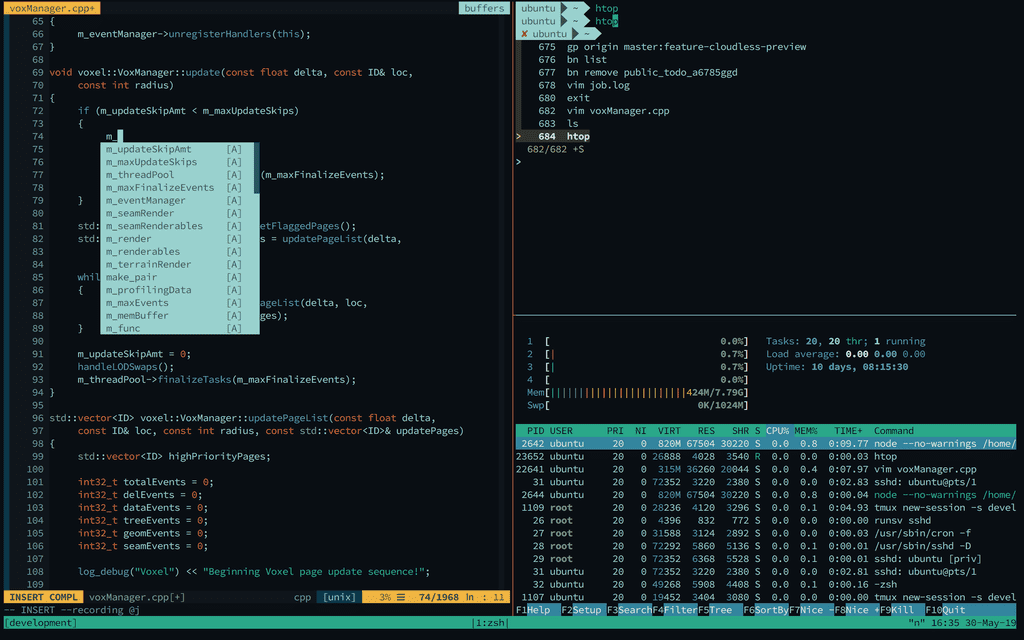myos
v1.0.3
Published
A fully dockerized development environment
Downloads
9
Readme
MyOS - develop and share command line environments
If you like the project, please remember to star it so we can grow the community!

If you want your environment listed in the showcase, please submit a PR
High Level
Uses Docker + Docker Compose to provide a consistent and reproducible build environment. Base image assumes the minimum while still being useful out of the box.
Usage
Assumptions
Everything depends on myos base Docker image. This image is available on Dockerhub, but you may also build it using the included Dockerfile.
The default docker-compose.yml mounts your hosts ~/.ssh/authorized_keys file into the running container. This is what allows the openSSH server to authenticate you when you connect. This means you will need an authorized_keys file in the correct location with any keys you want to be able to use.
OSX Users: For display forwarding to work, you'll need to have X11 Quartz. It's crappy and I'd love to find an alternative.
Ctrl-D is the most sure fire way of getting out of the container
Setup
- Install the CLI
$ npm install -g myos- Create a new template project
$ myos init ./template
$ cd template- Start the container
$ myos create fooName- Connect to the container
$ myos connectAdvanced usage
Assuming you've already installed the tool, my personal configuration can be used to test out MyOS.
- Clone my personal MyOS config
$ git clone https://github.com/rylandg/rylandg-myosfiles- Create a MyOS based on my setup
$ cd rylandg-myosfiles
$ myos create rysetup
$ myos connect rysetupAPI
Init
myos init <dir>
Creates the initial templates that the default docker-compose.yml expects. These are...
# vim
vim/binds.vim
vim/helpers.vim
vim/plugins.vim
vim/vimrc
# zsh
zsh/.zlogin
zsh/.zprofile
zsh/.zshenv
zsh/.zshrc
# tmux
tmux/tmux_saves
tmux/install_tmux.sh
tmux/tmux.confThese files are empty (for the most part). You're expected to add your environment specific settings.
Create
myos create <name>
Runs docker-compose up -d from the current directory
Connect
myos connect
Connects to a previously created MyOS environment
Restart
myos restart <name>
Restart a previously created MyOS environment
Remove
myos remove <name>
Remove a running MyOS environment
Features
- Configuring locale and colors
- Creating a non-root user and setting necessary permissions
- Setups OpenSSH for password-less login
- Enabling X11 Display server
- Super light, highly optimized base Ubuntu image
- Mechanism to "safely" run multiple processes
- Init for running your user process as PID > 1
- OpenSSH server out of the box
- ZSH
- HTop
- Vim8 with clipboard support
- Latest Tmux built from source
- XAuth and XDisplay packages for clipboard support
Issues/planned changes
- Very vim focused, would like to see if its possible to support other editors (definitely Emacs)
- Needs CLI command that allows you to copy another users MyOS environment
- Multiple MyOS environments should be able to run simelataneously
- SSH key for authorized_keys could be autogenerated
- Potentially move away from NodeJS for CLI
